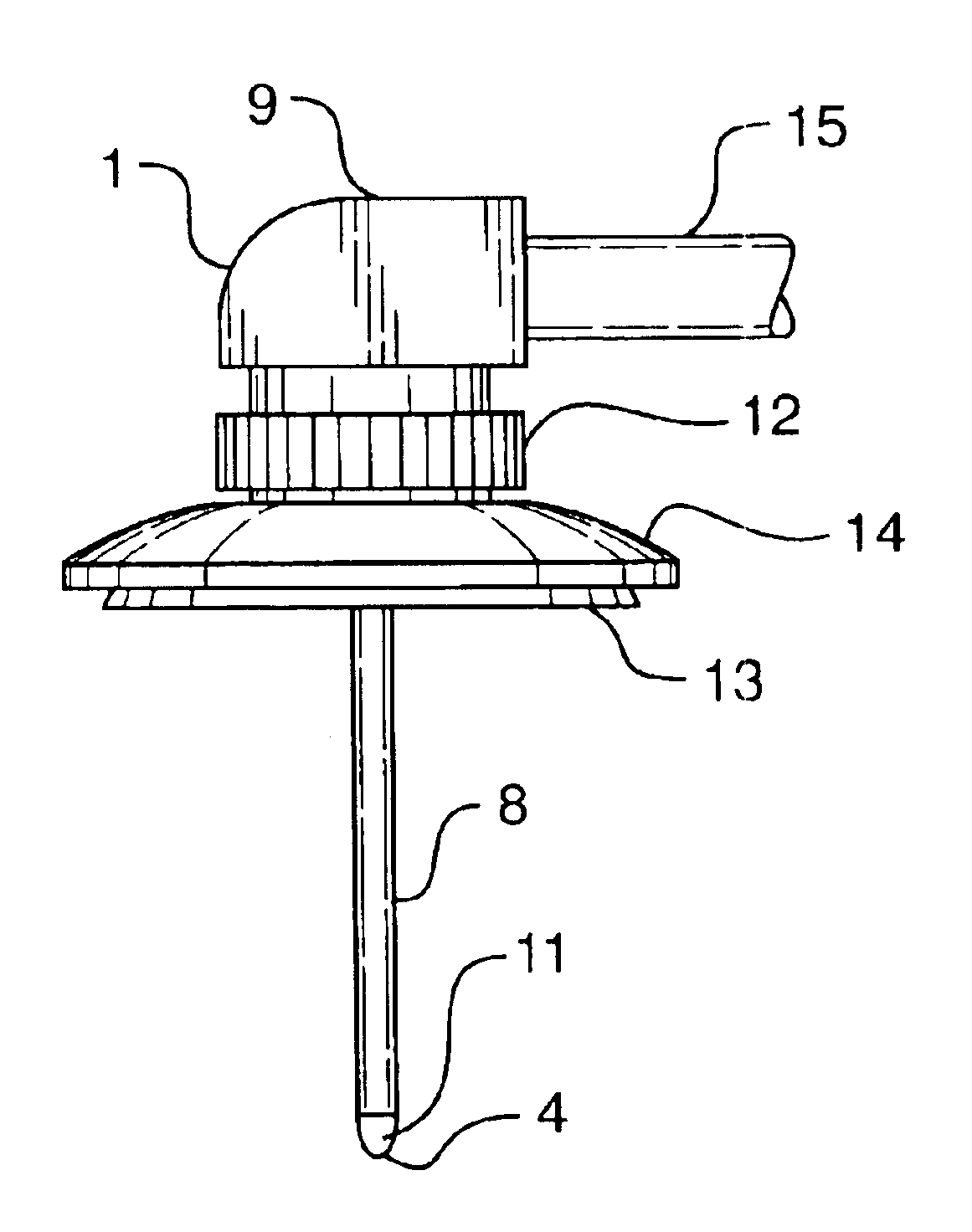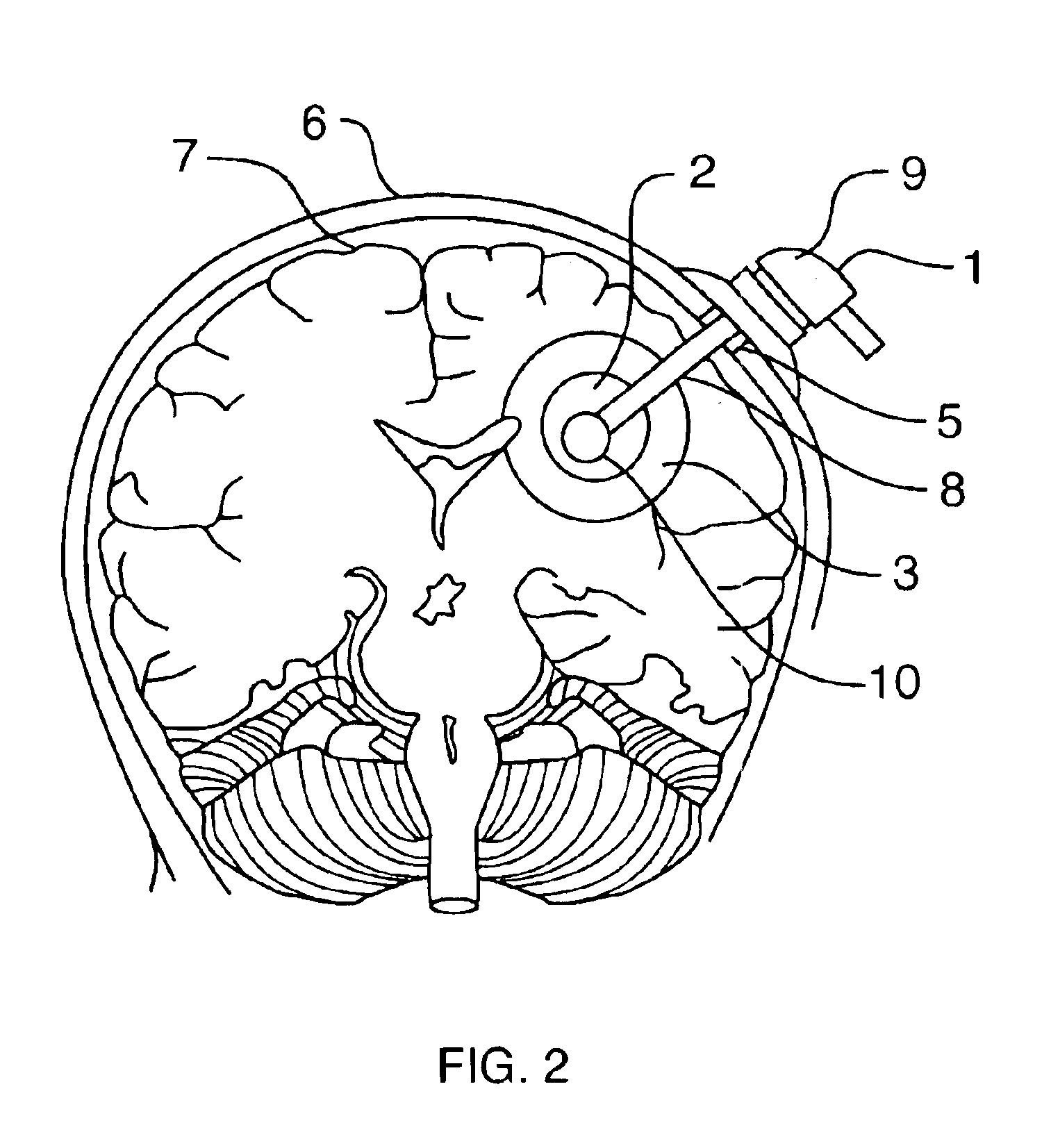Method and device for reducing death and morbidity from stroke
a stroke and death technology, applied in the field of stroke death and morbidity reduction methods and devices, can solve the problems of inability to fully understand the exact mechanism, the cells within the infarction zone will be irreversibly damaged, and the death and disability
- Summary
- Abstract
- Description
- Claims
- Application Information
AI Technical Summary
Benefits of technology
Problems solved by technology
Method used
Image
Examples
Embodiment Construction
FIG. 1 depicts, in simplified form, a coronal section of the head with an interstitial brain cooling probe 1 mounted on the head 6 with the distal cooling end of the probe 4 centered in an infarcted zone of tissue 2. It will be recognized that infarctions of the brain may be nearly spherical as depicted, but are usually irregular in shape. However, this invention can be understood by referring to the simplified representation in the figures. The shaft of the probe 8 connects the distal end of the probe 4 to the proximal end of the probe 9 and passes through a surgically created hole in the skull 5. The probel is activated to cool the region surrounding the infarcted zone of tissue 3 to a temperature below 37 degrees for a period of time between 1 hour and one month. The cooling process is by heat conduction from the region surrounding the infarcted zone 3, through the infarcted zone 2, and into the distal tip of the probe 4. The temperature at the surface of the distal tip of the pr...
PUM
 Login to View More
Login to View More Abstract
Description
Claims
Application Information
 Login to View More
Login to View More - R&D
- Intellectual Property
- Life Sciences
- Materials
- Tech Scout
- Unparalleled Data Quality
- Higher Quality Content
- 60% Fewer Hallucinations
Browse by: Latest US Patents, China's latest patents, Technical Efficacy Thesaurus, Application Domain, Technology Topic, Popular Technical Reports.
© 2025 PatSnap. All rights reserved.Legal|Privacy policy|Modern Slavery Act Transparency Statement|Sitemap|About US| Contact US: help@patsnap.com



